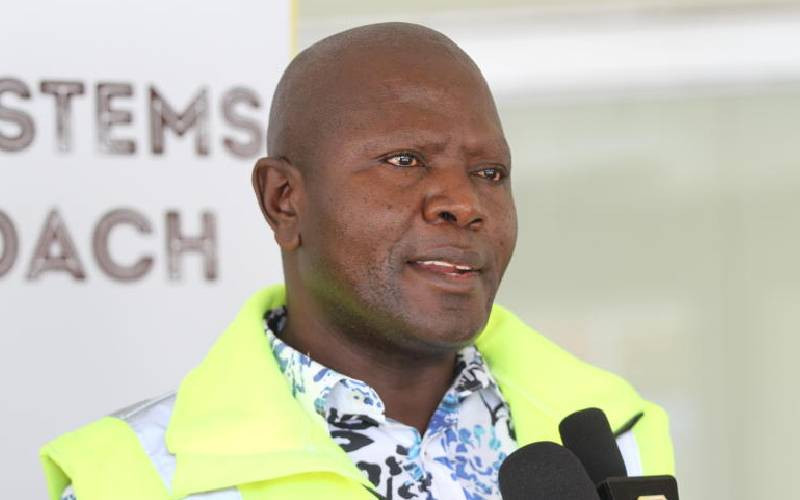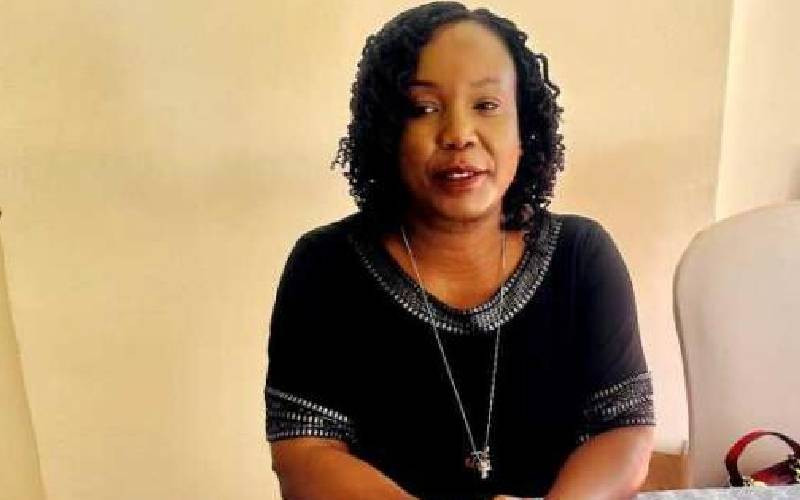Although diabetic, WAMBUI GATENDE, 18, says her life has been as normal as anyone else’s. She spoke to MATILDA NZIOKI about her experience
Tell us a little about your condition...
I am diabetic. I was diagnosed at the tender age of five. I have diabetes type one. It’s also called juvenile or child onset diabetes. It can be genetic, but it has to be triggered by something in the body. Mine was genetic. My grandfather and aunt are diabetic. Type two is the one that affects adults.
Did you understand it’s implication growing up?
I remember being trained with my parents on what diabetes is and all other important details. At the time, it was mostly for my parents. When I became slightly older, I used to attend Diabetes Management Institution Camps (DMI), which were started by Dr Eva Njenga to facilitate education for diabetics and their parents/ caregivers.
She’s an endocrinologist and diabetician and has been instrumental in guiding me on how much insulin I should use, among other things.
I thank God because my parents have been able to provide the necessary care and I can access proper medical attention.
What understanding of diabetes did you gain through the trainings?
It helped me realise that diabetes is not a problem, but a manageable condition. There’s a misconception that it is a killer disease, but the truth is, it’s only dangerous if mismanaged.
Type one diabetes is controlled with insulin injections. This is because a patient’s pancreas, the organ that secretes insulin, is destroyed by autoantibodies. My immune system attacked my pancreas and insulin had to be injected.
Most of the food we consume is broken down into glucose, which, with the help of insulin, is absorbed into the bloodstream for energy.
Type two diabetics have insulin, but it doesn’t function well. They often control it by adopting a healthy lifestyle and taking medication to manage the sugar levels.
Did you fear the injections?
Not really. The needles were small and fancy. The other equipment was user-friendly and attractive. The needles are small because they don’t inject up to the muscles, but just below the skin. It has to be injected because insulin is not stable anywhere else in the body apart from the bloodstream.
At school, it was arranged such that the school nurse gave me a dose at the stipulated times.
Stay informed. Subscribe to our newsletter
What are the specific procedures in managing diabetes?
I take my insulin thrice a day at mealtimes and I do a sugar reading four times a week to make sure the sugar level is normal and not too high or too low. I just prick a finger and put the little blood on a special strip. I then use a glucometer to measure the sugar level.
If one checks their sugar levels fewer times like once a month, they cannot tell when there’s a lot of sugar not being converted in their system, which can be life-threatening.
If one cannot afford the strips to do it at home, they have to go to a health centre, which can be demanding. It is costly to successfully manage diabetes.
How was it like growing up as a diabetic?
I’ve never seen it as a problem. I did everything kids my age did such as sports. I even recently climbed Mt Kenya with my dad, two sisters and a nutritionist, Ranjan Patel. I needed the nutritionist for guidance and as a precautionary measure. For instance, one’s insulin might freeze and a nutritionist can advice on what foods to take.
It was not hard for me to climb the mountain because it was more about my fitness than my condition. My dad has done it many times and I just wanted to try it out.
Were you ever treated differently because of your condition?
My mum says the hardest times were birthday parties because she had to discuss with other mothers to avoid giving me sweets, cakes and sodas. Sometimes after these parties, my sugar level would go up.
I had been trained well and I understood. Sometimes I would be given the sweet stuff in small quantities. My room is full of consolation gifts I was given as other kids got sweets.
How different is your experience as a grown up?
It was easier to keep up with the doses in school because of the regular schedule, but now I have to take charge of my life and plan well. One’s life has to be controlled; you just can’t skip meals. One has to adopt a healthy lifestyle that consists healthy eating habits.
Also, as one grows, they increase their insulin intake. That is because even the body organs are growing.
By the way, did you know famous actress Halle Berry is also a juvenile diabetic? Look how much she has achieved.
Where did you go to school?
Kenton College Preparatory, a British prep school. We had sports every afternoon and I never missed any.
I went to Braeburn for my International General Certificate of Secondary Education (IGCSE) and later to Braeburn College for my IB (International Baccalaureate).
I will be joining Royal Melbourne Institute of Technology University (RMIT) in Australia in July for a degree in architecture.
Are you a first born?
I’m the first born and have twin sisters — Muthike and Kamwende — who are in their last year of high school at Braeburn. Then there’s my mum and dad.
Tell us about your pendant...
It’s an energy pendant that gives stamina. It’s a German invention. It’s sold online through Qnet and is supplied by Amezcua.
The glass is heated with high fusion and it has 13 minerals heated into the glass.
It creates positive energy. Simply by wearing it around your neck, you will feel a sense of balance and harmony in your body.
How does that work?
The pendant generates frequency that stimulates the brain’s functionality. It also stabilises the water in the body and is useful to anyone, not only diabetics.
 The Standard Group Plc is a
multi-media organization with investments in media platforms spanning newspaper
print operations, television, radio broadcasting, digital and online services. The
Standard Group is recognized as a leading multi-media house in Kenya with a key
influence in matters of national and international interest.
The Standard Group Plc is a
multi-media organization with investments in media platforms spanning newspaper
print operations, television, radio broadcasting, digital and online services. The
Standard Group is recognized as a leading multi-media house in Kenya with a key
influence in matters of national and international interest.
 The Standard Group Plc is a
multi-media organization with investments in media platforms spanning newspaper
print operations, television, radio broadcasting, digital and online services. The
Standard Group is recognized as a leading multi-media house in Kenya with a key
influence in matters of national and international interest.
The Standard Group Plc is a
multi-media organization with investments in media platforms spanning newspaper
print operations, television, radio broadcasting, digital and online services. The
Standard Group is recognized as a leading multi-media house in Kenya with a key
influence in matters of national and international interest.








